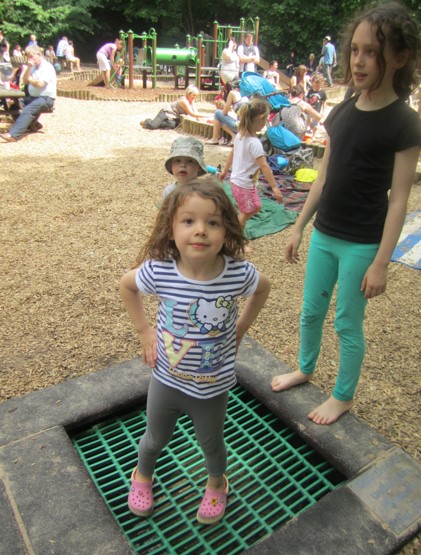What is proprioception?
In the simplest terms, proprioception is the concept of knowing where your body is in space and the ability to safely manoeuvre around your environment. It is a sense or perception, usually subconscious, of the movements and position of your body and especially your limbs, independent of your vision. This sense is gained mainly from input from sensory nerve terminals in your muscles and tendons. If you close your eyes now, you can still touch your nose without being able to see your hands, this requires good proprioception.
If you think about some of the children in your class, they might appear to be clumsy, they may struggle to negotiate spaces and appear to be always bumping into things and to other people. They probably need help to develop their proprioception.
If you, as an adult, were in a confined, crowded space and I asked you to put your hand out to the side, you would probably approach this task cautiously, for fear of hurting anyone in your immediate vicinity or knocking something out of their hand. This is because you have good proprioception. It will be as natural to you now as breathing in and out. But as a young child you would not have this skill and you would need to work to develop it.
Proprioceptive input is important because it helps children to feel a sense of self, aides in self-regulation and promotes success in both fine motor and gross motor activities. It also helps children to be aware of their own and others’ personal space and how to appropriately engage with their peers without overstepping boundaries.
For teachers and practitioners working with the youngest children you will recognise some of the traits described; a lack of awareness of where different body parts are, “clumsiness”, an apparent lack of spatial awareness. Children who struggle with proprioception don’t always have a sense of their body in space, which makes it difficult for them to sit still, pay attention and visually remember numbers and letters. If a child is always trying to focus on their awareness of where their limbs are, they can be easily fatigued because their brains are working overtime to not only keep their bodies still and focused, but their minds focussed and ready for learning.
Proprioception needs to be developed by allowing children to gain feedback on movement through their muscles and joints, so it often involves working with heavy equipment.
So how can you support a child to develop proprioceptor control?
Children who have not yet developed full proprioception need good sensory feedback. Proprioceptive input to the brain comes in through the muscles and joints of the body. The brain takes in this information and is able to process how your body needs to move in order to complete tasks. Most children develop a strong proprioceptive sense simply through engaging in everyday play activities that allow for exploration and movement.
Activities to develop proprioceptor control include:
Wheelbarrow walking – holding children by their legs so that they “walk” using their arms.
Heavy lifting – children like to move objects around when building – many schools have large wooden blocks which are heavy. Logs and tyres are also useful for this purpose.
Transporting – many young children are natural transporters and enjoy moving objects around in buckets and wheelbarrows. Large buckets and trugs full of water are heavy and will develop good proprioception. Heavy watering cans, wheelbarrows full of stones and pebbles etc.
Kneading dough and playdough also provides good sensory feedback to joints and muscles, different doughs will give different levels of feedback, this will help develop sensitivity.
Scrubbing using brushes or long handled brooms also gives good feedback and develops awareness of body parts.
Digging in soil and sand, pulling a friend around in a tuck, pushing heavy objects, riding a bike or trike. playing on monkey bars, climbing walls, jumping, climbing, crawling, chair push ups or sit ups, rolling or pushing balls, running, skipping, balancing.
What equipment might you need?
Anything heavy that children will naturally want to move.
Outdoor equipment such as :
Wheelbarrows, large buckets, trugs, tyres, large wooden blocks, logs, bricks, stones and pebbles, watering cans, balls, weighted balls, spades, scrubbing and firm bristled brushes.
Dough and malleable materials, clay, plasticine.
Footnote: I thought long and hard about including a photograph of my child on a trampoline. I know that some occupational therapists advise against children under 6 using ordinary trampolines. In the end I decided to include the picture because my daughter is using a trampoline specifically designed for under 7’s and I thought it would provide a useful discussion point. I also think she was too cute for words at that age, so any excuse to share…

Leave a Reply